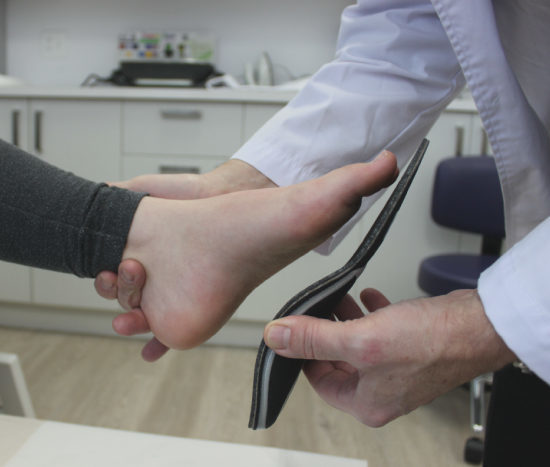Introduction

Diabetic orthotic insoles are specialized footwear inserts designed to provide support, cushioning, and pressure relief for individuals with diabetes. These insoles are crucial for preventing foot complications, such as ulcers and sores, which are common in diabetic patients due to neuropathy and poor circulation. By distributing pressure evenly across the foot, they help reduce the risk of injury and promote overall foot health. Diabetic orthotic insoles are an essential component of comprehensive diabetic foot care, contributing significantly to the prevention of serious foot conditions and improving the quality of life for those with diabetes.
Understanding Diabetic Foot Complications
Neuropathy and Its Impact
Neuropathy, a common complication of diabetes, leads to nerve damage that reduces sensation in the feet. This makes it difficult for individuals to detect injuries, increasing the risk of wounds going unnoticed and untreated.
Poor Circulation and Its Consequences
Diabetes often leads to poor blood circulation, particularly in the extremities. This reduced blood flow slows down the healing process, making even minor foot injuries more serious and prone to infection.
Importance of Diabetic Orthotic Insoles

Pressure Redistribution
These insoles are designed to evenly distribute pressure across the foot, reducing the risk of pressure points that can lead to ulcers and sores.
Enhanced Support and Cushioning
These insoles provide extra support and cushioning, protecting the foot from hard surfaces and reducing the impact on high-risk areas.
Features of Diabetic Orthotic Insoles
Materials Used
These insoles are typically made from materials like memory foam, gel, or specialized plastics that offer optimal comfort and support.
Customization Options
Many insoles can be customized to fit the unique shape and needs of an individual’s foot, providing more effective relief and protection.
Benefits of Using Diabetic Orthotic Insoles

Prevention of Foot Ulcers
By reducing pressure and providing cushioning, these insoles play a crucial role in preventing foot ulcers, which are common in diabetic patients.
Improved Mobility
Enhanced support and comfort from such like insoles can lead to improved mobility, allowing individuals to stay active and maintain a healthier lifestyle.
Choosing the Right Diabetic Orthotic Insoles
Consulting a Podiatrist
It’s essential to consult with a podiatrist or healthcare provider when selecting these insoles to ensure they meet specific medical needs.
Considering Foot Type and Condition
Different insoles are designed to address various foot conditions, such as flat feet or high arches. Understanding your foot type is crucial in choosing the right insole.
Maintenance and Care of Diabetic Orthotic Insoles

Regular Cleaning
Keeping insoles clean is vital to prevent infections. They should be regularly washed and air-dried to maintain hygiene.
Periodic Replacement
This kind of insoles wear out over time and should be replaced periodically to ensure they continue to provide adequate support and protection.
Cost and Insurance Coverage
Understanding Costs
The cost of these insoles can vary widely depending on the materials and customization required.
Insurance and Reimbursement
Many insurance plans cover these insoles. It’s important to check with your provider to understand the extent of coverage and reimbursement options.
Alternatives to Diabetic Orthotic Insoles
Over-the-Counter Options
There are various over-the-counter insoles available, but they may not provide the same level of support and customization as orthotic insoles.
Custom-Made Orthotics
For those with more severe foot issues, custom-made orthotics might be a better option, offering tailored support and relief.
Testimonials and Success Stories
Real-Life Experiences
Many diabetic patients have experienced significant improvements in foot health and overall quality of life after using diabetic orthotic insoles.
Expert Endorsements
Healthcare professionals often recommend these insoles as an integral part of diabetic foot care.
Conclusion
Diabetic orthotic insoles are a vital tool in managing and preventing foot complications associated with diabetes. By providing enhanced support, cushioning, and pressure relief, these insoles help reduce the risk of ulcers and improve mobility. Consulting with a healthcare provider to select the right insole and ensuring proper maintenance can significantly contribute to better foot health and overall well-being for diabetic patients. Investing in quality insoles and proper foot care can prevent severe complications and improve the quality of life for individuals living with diabetes.
FAQs
1. What are diabetic insoles?
These insoles are specialized inserts for shoes designed to provide support, cushioning, and pressure relief for people with diabetes. They help prevent foot complications such as ulcers and sores.
2. How do diabetic orthotic insoles work?
These insoles work by evenly distributing pressure across the foot, providing extra cushioning and support. This reduces the risk of developing pressure points that can lead to ulcers and other foot injuries.
3. Can I use over-the-counter insoles instead of diabetic orthotic insoles?
While over-the-counter insoles are available, they may not offer the same level of support and customization as diabetic orthotic insoles. It’s best to consult with a healthcare provider to choose the most suitable option for your needs.
4. How often should I replace my diabetic orthotic insoles?
This kind of insoles should be replaced periodically as they wear out over time. The frequency of replacement depends on the material and usage but generally should be every 6 to 12 months.
5. Are diabetic orthotic insoles covered by insurance?
Many insurance plans cover the cost of these insoles. It’s important to check with your insurance provider to understand the coverage and reimbursement options available.
